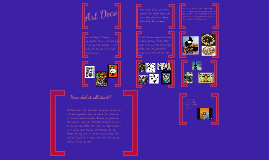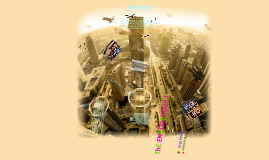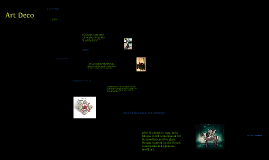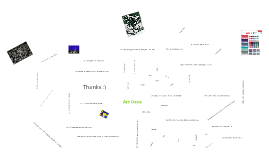Art Deco
Transcript: "The Musician", oil on canvas by Tamara de Lempicka, 1929, stolen in 1 May 2009 from the Scheringa Museum of Realist Art. Art deco experienced a decline in popularity during the late 1930s and early 1940s, but had a resurgence during the 1960s, It continued with the popularization of graphic design during the 1980s. Art deco had a profound influence on many later artistic styles, such as Memphis and pop art. For paying attention society's purpose was to demonstrate internationally the evolution of the French decorative arts. They organized the 1925 Exposition Internationale des Arts Décoratifs et Industriels Modernes (International Exposition of Modern Industrial and Decorative Art) in Paris, which would feature French art and business interests. Art Deco movement followed the Art Nouveau era.The Art Deco era happened during the Third Republic in France which was marked by social stability, industrialization, and the establishment of professional civil service. The terms style moderne and art deco both derive from the exposition's title, though the term art deco was not used much until popularized by art historian Bevis Hillier's 1968 book Art Deco of the 20s and 30s. Art deco was a popular style used for consumer products such as furniture, china, lamps, cars, jewelry, watches, ash trays, pens and more. Material History Streamline Art deco is characterized by use of materials such as aluminium, stainless steel, lacquer, Bakelite, chrome and inlaid wood, specifically Ebony. Exotic materials such as sharkskin (shagreen), and zebra skin were also evident. The use of stepped forms and geometric curves (unlike the sinuous, natural curves of Art Nouveau), chevron patterns, ziggurat-shapes, fountains, and the sunburst motif are typical of art deco. Some of these motifs were ubiquitous – for example, sunburst motifs were used in such varied contexts as women's shoes, radiator grilles, radio and clock faces, the auditorium of the Radio City Music Hall, and the spire of the Chrysler Art Deco is an eclectic artistic and design style that began in Paris in the 1920s and flourished internationally throughout the 1930s and into the World War II era. The style influenced all areas of design, including architecture and interior design, industrial design, fashion and jewelry, as well as the visual arts such as painting, graphic arts and film Introduction Thank you! City Hall in Buffalo, New York; John Wade with George Dietel, built 1929–1931 A related style named Streamline Moderne, or simply Streamline, developed soon afterward. Streamline was influenced by the modern aerodynamic designs, including those developing from the advancing technologies of aviation, ballistics, and other applications requiring high velocity Streamlining quickly influenced American and European automobile design and changed the appearance from the rectangular "horseless carriages" into sleek vehicles with sweeping lines, symmetry, and V-shapes that seemed to add to their suggestiveness of speed and efficiency The art deco spire of the Chrysler Building in New York City, built 1928–1930

















